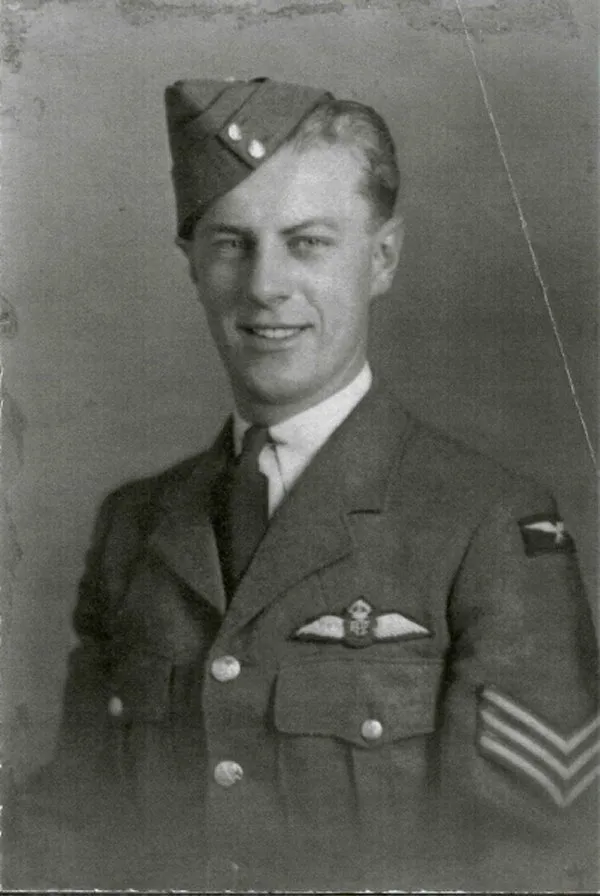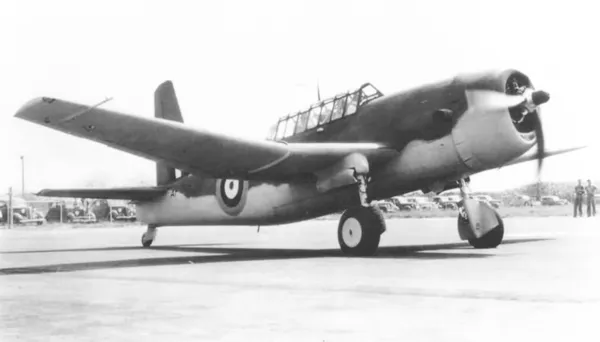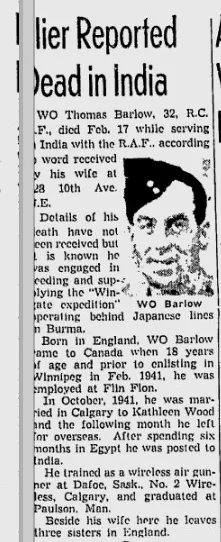Hillman, Victor John
Killed in Flying Accident 1944-02-17


Birth Date: 1920-March-15
Born:
Home: Loon Lake, Saskatchewan
Enlistment:
Enlistment Date: Unknown
Service
RCAF
Unit
152 OTU- Operational Training Unit (RAF)
Base
RAF Peshawar, India
Rank
Flying Officer
Position
Flying Officer
Service Numbers
J/20621
Prev: R/119550
First Burial
 Rawalpindi, Pakistan
Rawalpindi, Pakistan
152 Operational Training Unit Vengence II aircraft AN 629 lost control in turbulance in the air and crashed sixteen miles south-west of Chakdaha, at Marakabur, Bengal
WO T Barlow (RCAF)(UK) and Flying Officer VJ Hillman (RCAF) were killed
addendum 2: See page 324. F/O. Hillman is buried in the Rawalpindi War Cemetery,Pakistan in the section of the Protestant Cemetery known as Gorah Qabrastaan.Vengeance AN629
Vultee Vengeance

The Vultee A-31 Vengeance was an American dive bomber of World War II, built by Vultee Aircraft. A modified version was designated A-35. The Vengeance was not used operationally by the United States, but was operated as a front-line aircraft by the British Royal Air Force, the Royal Australian Air Force, and the Indian Air Force in Southeast Asia and the Southwest Pacific.
In 1940, Vultee Aircraft started the design of a single engined dive-bomber, the Vultee Model 72 (V-72) to meet the requirements of the French Armée de l'Air. The V-72 was built with private funds and was intended for sale to foreign markets. The V-72 was a low-wing, single-engine monoplane with a closed cockpit and a crew of two. An air-cooled radial Wright Twin Cyclone GR-2600-A5B-5 engine rated at 1,600 hp (1,200 kW) powered the V-72. It was armed with both fixed forward-firing and flexible-mounted .30 in (7.62 mm) machine guns in the rear cockpit. The aircraft also carried up to 1,500 lb (680 kg) of bombs in an interior bomb bay and on external wing racks.
The Vengeance was uniquely designed to dive vertically without lift from the wing pulling the aircraft off target. To this end, it had a 0 degree angle of incidence on the wing to better align the nose of the aircraft with the target during the dive. This resulted in the aircraft cruising in a nose-up attitude, giving a poor forward view for the pilot, particularly during landing. It had an unusual, W-shaped wing planform. This resulted from an error in calculating its centre of gravity. Moving the wing back by "sweeping" the centre section was a simpler fix than re-designing the wing root. This gives the impression of an inverted gull wing when seen from an angle, when in fact the wing has a more conventional dihedral on the outer wing panels.Wikipedia
 Canadian Virtual War Memorial
Canadian Virtual War Memorial Commonwealth War Graves Commission
Commonwealth War Graves Commission www.findagrave.com
www.findagrave.com
 Wikipedia Vultee Vengeance
Wikipedia Vultee Vengeance War History Online - Vultee Vengeance
War History Online - Vultee Vengeance